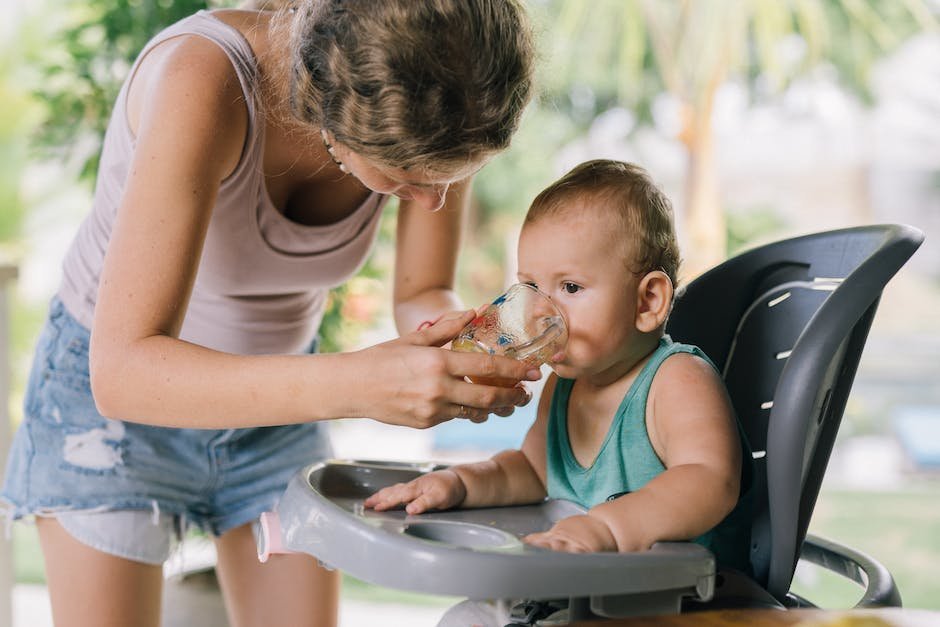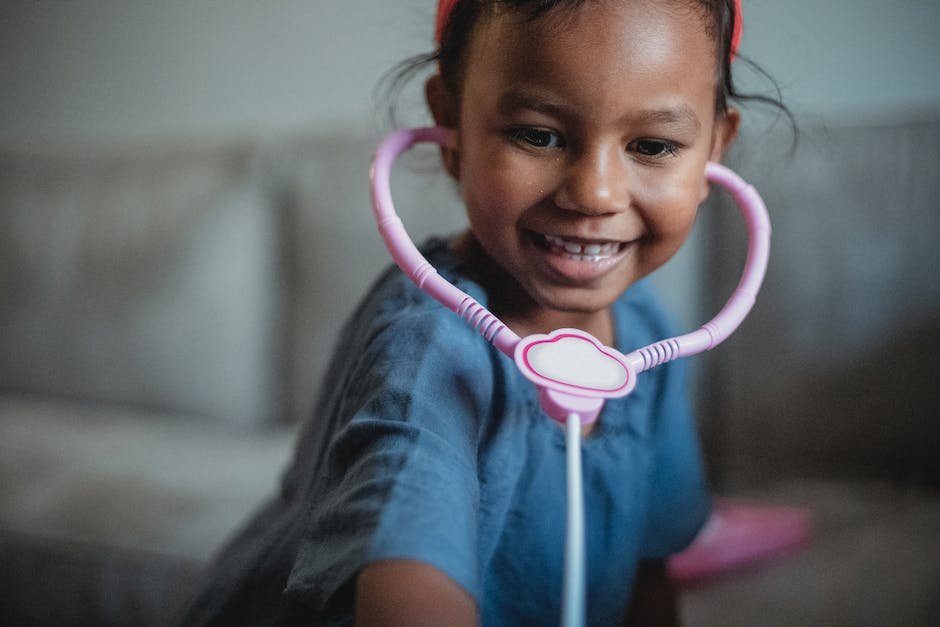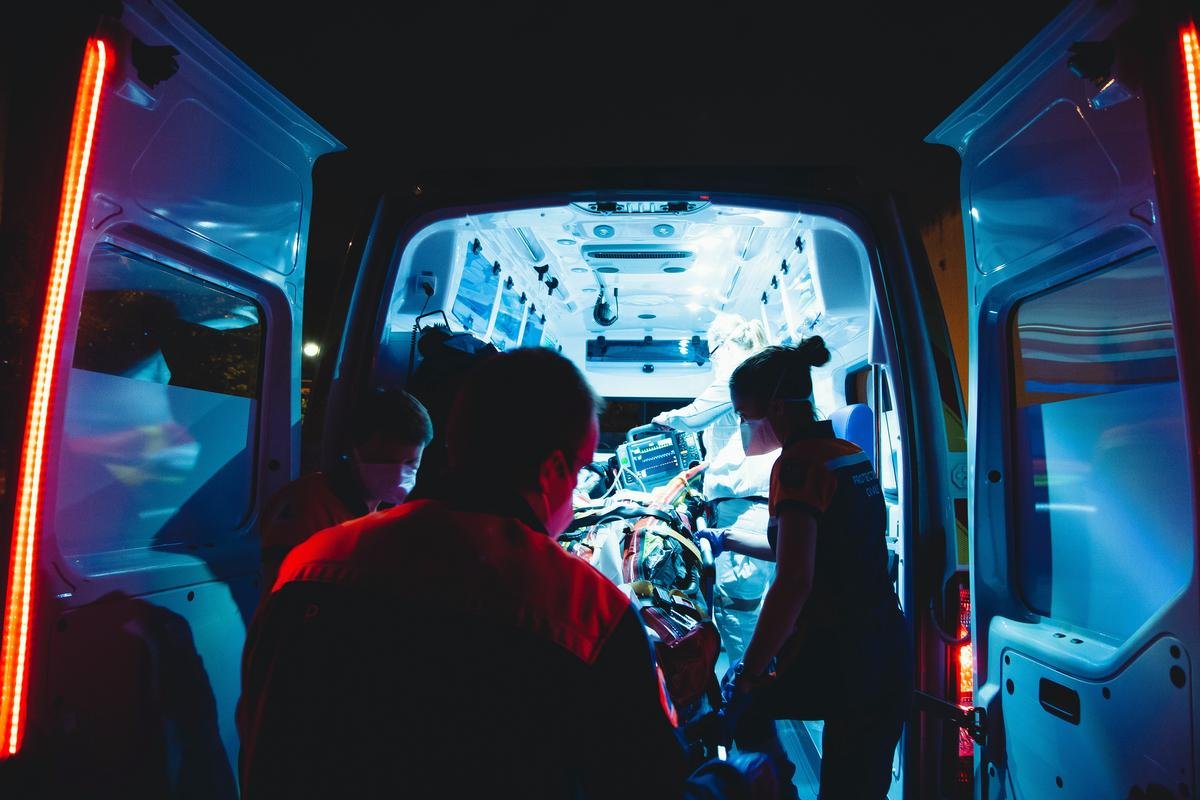
Welcome to a comprehensive overview of autism-friendly safety products. Creating a secure environment for individuals with autism is imperative, given their distinct interaction with the surroundings and heightened sensory sensitivities. Through this exploration, we aim to illuminate the importance of recognizing and addressing the unique safety needs of autistic individuals. From understanding the potential risks of wandering to the design of calming, autism-adapted living spaces, we will guide you through the nuances of crafting a safe haven that respects and protects the diverse experiences of those on the autism spectrum.
Understanding Autism and Safety Needs
Title: Understanding Safety for Our Unique Little Ones: Tailoring Protection for Autistic Children
Every child is a universe of possibilities, wrapped in giggles, wide-eyed wonder, and endless energy. As parents, it’s our number-one job to keep our kids safe, to wrap that universe in a protective bubble as they explore and grow. However, when it comes to children with autism, that bubble often needs extra layers—unique adjustments tailored to their individual experiences of the world.
So, why do safety needs differ for children with autism? Let’s dive in and find out.
Sensory Sensitivities: The World Turned Up Loud
Children on the autism spectrum often experience sensory information differently. What’s a gentle hum to us could be a deafening noise to them. Bright lights aren’t just bright; they’re blinding. This heightened sensitivity can make everyday environments, from the local supermarket to a family gathering, challenging and even dangerous if a child becomes overwhelmed and tries to run away from the sensory overload.
Wandering and Elopement: When Curiosity Takes the Lead
Wandering, or elopement, is a concern for many parents of autistic children. These kids sometimes have a strong urge to explore or might seek out a place they find calming in moments of stress. Unfortunately, they may not understand the risks of traffic or getting lost. This is why creating a secure environment and establishing clear routines is even more crucial for keeping our extraordinary explorers safe.
Communication Barriers: When Words Aren’t Enough
Communication is a cornerstone of safety—being able to tell someone about pain, discomfort, or danger is key. But not all children with autism can voice their needs and fears in ways that others readily understand. This barrier opens up risks that other children might not face, like not being able to explain they’re allergic to a certain snack at a friend’s house or tell a teacher they’re feeling ill.
Unique Interests and Behaviors: Safety in Repetition
Special interests are a big part of many autistic children’s lives; they provide comfort, but they can also lead to safety concerns if a child is fixated on something potentially dangerous. Additionally, some children might have repetitive behaviors that pose safety risks, such as running back and forth without awareness of their surroundings. Parents and caregivers need to understand and embrace these behaviors while gently steering them towards safe expressions.
Teaching Safety Skills: A Different Approach
Let’s face it, “stranger danger” talks or “stop, drop, and roll” lessons don’t always click the same way for children with autism. Their learning style often requires repetition, visuals, and practical practice tailored to how they process information. It means taking the time to understand how our children learn and perceive danger, and then crafting safety lessons around that understanding.
The Need for a Strong Support Network
Lastly, a supportive community can be a lifeline. Awareness and understanding from those around us can help create a safety net that extends beyond the front door. This means educating friends, family, teachers, and even local emergency services about how our children might react in a crisis and the best ways to offer help.
In the end, keeping our children with autism safe isn’t just about adding a few extra locks or alarms, although those are important steps. It’s about tuning into their world, their needs, and their way of experiencing life. It’s about adorning our homes with love, patience, and understanding, and extending that care into the wider community. Because every child deserves to explore their universe safely, and as parents and guardians, we have the honor of holding their hands on that journey.

Identification and Alert Tools
Keeping Our Angels Safe: Identification Tools for Children with Autism
Every child is a gift, a precious little puzzle that we as parents get to solve and understand. But when one has a child with autism, the pieces of that puzzle might be shaped a bit differently. Safety is paramount and can be a unique journey for these wonderful kids. So, how do families reinforce the shield of safety around their little ones who may not interact with the world in the typical way? Simple: Identification tools.
You’ve buckled them in their seats, child-proofed the house, and taught them to look both ways before crossing the street, but what if they wander off when your back is turned, spurred by a fixation or a sudden overwhelming desire to escape sensory input?
Here’s where identification tools come in handy, acting as a lifeline linking a child back to their safe haven—home.
Medical ID bracelets and necklaces are a subtle yet effective way to carry essential information. They can be inscribed with a child’s name, diagnosis, and an emergency contact number. Noticeable to adults, but often just unassuming jewelry to the child, these can speak volumes when a child may not be able to communicate the necessary details themselves.
Engraving “Autism – May Not Respond to Verbal Commands” can also cue a finder into modifying their approach, avoiding misunderstandings that could arise from expecting typical interaction.
Temporary tattoos offer a creative solution for day-trips or events. Quick, painless, and even fun for the child to wear, these tattoos can hold the same critical information that medical IDs do, serving as a beacon for assistance if they become lost or disoriented. They’re easily applicable before a day at the amusement park, and easily removable once back in the nest.
GPS trackers have heralded a new era of peace of mind for parents. Worn as watches, clipped onto clothing, or nestled in a backpack, these devices allow parents to monitor their child’s location in real time. Some even come with features that allow the setting of geographical boundaries, alerting caregivers the moment their intrepid explorer steps beyond the safe zone.
One might argue that technology can fail, and that’s true. That’s why combining tech with personalized clothing can be a double safeguard. T-shirts with a child’s name and emergency contact printed subtlely on the hem or woven into a fun design add another layer of safety without hampering the child’s style or comfort.
Remember, the best identification tool is the one that works for the child and family. It should be non-intrusive, comfortable, and durable, blending into the child’s routine effortlessly. As a united front, caregivers, educators, and communities can cherish the vibrant individuality of children with autism while nurturing their journey through the world that may sometimes overwhelm them.
Each child deserves to explore, learn, and thrive within the loving gaze of those who understand them best. By integrating these identification tools into daily life, families expand the protective bubble so that when a child does step out to meet the world, they carry a piece of their sanctuary with them. Because no matter where they wander, they are always someone’s heart walking around outside their chest, and every precaution taken is a testament to that boundless love.

Home Safety Modifications
Capturing a child’s imagination while keeping their feet firmly planted on safe ground is a balancing act that many families face, especially those with autistic children. With the advent of smart technology and a few trusty life hacks, ensuring a child’s safety can be integrated seamlessly into the home environment.
First up, let’s chat about secure locks. Installing locks above a child’s reach on doors and windows can prevent wandering. Opt for childproof locks that are challenging for little hands to operate, but always make sure that all family members know how to unlock them in case of an emergency.
Next, visual cues play a substantial role. Use color-coding, pictograms, or labels to highlight danger zones or safe areas within the house. Bright tape on the floor can signal where it’s not safe to cross, keeping your little one away from harm.
Also consider the power of tech for peace of mind. Motion sensors can alert you if a child enters an off-limits area. Apps that sync with home security cameras allow for real-time monitoring. Adjustable lighting systems that can dim or change color can help prevent overstimulation, create a calming environment, and even signal to your child when it’s time for bed or to calm down.
Creating a room dedicated to sensory play can be a haven for an autistic child, giving them a secure space to retreat to when the world gets overwhelming. Fill it with soft furnishings, padding for walls and floors, and a treasure trove of sensory toys.
Furniture choices also matter immensely. Opt for pieces with rounded edges or add edge guards to existing furniture. Anchor bookshelves and large furniture to the walls to prevent tipping. Keep a clutter-free home to reduce tripping hazards and maintain a calming environment.
In the bathroom, non-slip mats are a must-have. Consider installing tap covers to prevent burns and use a lockable cabinet for medication and cleaning supplies.
Finally, while we do everything to secure the physical environment, don’t overlook the importance of practicing safety drills. Use social stories and role-play to rehearse what to do during an emergency, making it a regular and reassuring part of the routine.
Remember, dear families, safety isn’t just about restrictions; it’s about fostering a space where children, autistic or not, can explore their world with just the right amount of freedom and a big cushion of security. With thoughtfulness and a touch of creativity, home can be the safest adventure of all.

Sensory-Friendly Safety Equipment
As we continue our conversation about creating a safe haven for children with autism, it’s paramount to reflect upon the types of sensory-friendly safety equipment that are not just essential but also respectful of each child’s unique needs. Understanding that each child may respond differently to various sensory inputs, choosing safety equipment that can adapt to individual sensitivities is a must.
Noise-cancelling headphones can be a lifesaver for children who are easily overwhelmed by loud or unexpected sounds. These headphones can provide a sense of calm in noisy environments, such as during community events or even at home during a lively gathering. They are especially handy during fireworks displays or in bustling supermarkets, helping to prevent sensory overload that could lead to distress or elopement.
For families on the go, portable blackout tents can offer a respite for a child needing a break from sensory overload. Lightweight and easy to set up, they can be a quick solution when visiting new places or when transitions become too much to handle. These tents can serve as a familiar and secure spot for decompression and are versatile enough to be used indoors or outdoors.
Water safety is another crucial aspect to consider for children with autism, who may not always perceive water as a hazard. A life jacket that is designed for sensory-sensitive children can greatly reduce risk during family outings to the beach or pool. These life jackets are often made with softer materials and come in designs that can be easily adjusted for a snug, yet comfortable fit, ensuring that the child’s experience is as stress-free as possible.
Let’s also talk about weighted blankets and vests, which can be immensely beneficial for children who respond well to deep pressure therapy. The gentle, even pressure provided by these items can mimic the feeling of being held or hugged, reducing anxiety and aiding in focus and calm. While they are not typically categorized as “safety equipment,” they can play a significant role in preventing meltdowns and fostering a sense of security.
Finally, it’s key to incorporate adaptive car seats and seatbelt covers that can cater to the needs of autistic children who might find traditional restraints uncomfortable or distressing. These adaptive accommodations come with padding and support features that promote a safer and more comforting car ride, which in turn helps everyone stay focused on the road without unnecessary distractions.
Remember, the choices made in safety equipment should empower children with autism to feel safe and understood without compromising their comfort. Moreover, these tools are a starting point—a conversation-starter with children about the importance of safety. They can help turn abstract concepts into tangible realities that children can see, touch, and learn to trust.
Equip the home, and in turn, equip those precious young minds with the understanding and coping mechanisms they will use to navigate their surroundings securely. Stay adaptable, listen to the child’s cues, and keep seeking out innovative solutions. With a blend of love, innovation, and the right resources, a home can be molded into a sanctuary where every child has the opportunity to feel secure and thrive.

Emergency Preparedness for Families with Autistic Children
Every family has its own set of challenges when it comes to preparing for emergencies, but when you have a child with autism, those preparations take on an extra layer of consideration. It’s not just about having a plan—it’s about having a plan that accommodates the specific needs of your child. With consideration and preparation, it’s possible to reduce the stress of emergency situations and ensure the safety of your autistic child.
First off, keep an emergency kit specifically tailored to your autistic child. This kit isn’t just your average flashlight-and-batteries setup—think of it as a comfort box as well as a survival kit. It should include favorite nonperishable snacks, toys, or other items that can help soothe and distract. Also, consider including a laminated card with a script to help your child understand what to do and expect in an emergency.
Training can also play a pivotal role. We can’t stress enough how life-saving it can be to teach and rehearse clear, simple steps to follow during emergencies. First responders and local authorities often offer programs designed to help children understand their role in safety plans. Be proactive about enrolling your child in these programs and advocate for their accessibility and inclusivity.
It’s also essential to foster understanding among first responders in your community. Consider scheduling a visit with the local fire station or police department to introduce your child. This opportunity can provide first responders with insight on how best to communicate with and assist your child during an emergency. They can also learn the subtle nuances that might be critical in an urgent situation.
Moreover, having an established emergency contact list is vital. This list should include close family, friends, neighbors, and any therapists or specialists involved in your child’s life. Make sure everyone on this list is familiar with your child’s needs and include a copy in the emergency kit.
Lastly, while it’s important to plan for physical safety, remember to address emotional safety as well. A calm, prepared demeanor goes a long way in helping an autistic child navigate the chaos of an emergency. Maintain routine as much as possible and offer reassurances. With the right plan in place, you can provide an anchor of stability in the face of unforeseen events.
In every step of emergency preparedness, embracing the unique attributes of an autistic child not only enhances their security but also promotes their well-being. It is a continual journey, one that extends far beyond stocking up on supplies. It’s about turning a potentially scary situation into an understood, well-practiced scenario where an autistic child doesn’t just survive, but thrives.

Educating and Empowering Children with Autism
Establishing Safety Essentials: Empowering Autistic Children for Emergencies
As dedicated nurturers of our little ones, we recognize that educating our children about safety is paramount, especially when it comes to the unique needs of autistic children. When emergencies strike, preparation can make a critical difference. Here’s how families can construct a comprehensive plan that acknowledges the individuality of their child and builds their confidence in handling various situations.
Tailoring an emergency kit for an autistic child is much like packing for a unique adventure. Include items that cater to their sensory preferences and soothe anxiety, like a favorite toy or a cozy blanket. It’s equally important to pack headphones to dampen alarming sounds and provide a sense of calm amidst chaos. Comfort items cannot be overemphasized. They serve as touchstones of familiarity, providing an anchor in unpredictable scenarios. Whether it’s a beloved stuffed animal or a treasured book, these items reassure and calm an overwhelmed child, reminding them of consistency in a world that’s suddenly become erratic. A laminated card with a script is a tool of empowerment. This card should outline clear, accessible steps and visuals to guide the child through emergencies. This manageable, bite-sized information can be the anchor in a stormy situation, instilling confidence and clarity when it’s needed most. Teaching and rehearsing clear, simple steps for emergencies transforms daunting drills into manageable tasks. Utilize role-play or social stories to break down actions into straightforward, repeatable processes. Consistent practice ensures that these steps become second nature, providing a roadmap for the child to follow. Programs designed to help autistic children understand safety plans offer specialized support. Such programs consider the specific learning styles and processing speed of autistic children, making safety education an inclusive experience. Advocating for accessibility and inclusivity in safety programs ensures that our children aren’t an afterthought. It means pushing for training sessions and materials that resonate with children across the autism spectrum, fostering an environment of preparedness and empowerment. Visits with local first responders can demystify authority figures and provide vital information on the child’s specific communication and assistance needs. These interactions build a bridge between the child and those tasked with their safety, ensuring first responders can extend compassionate aid tailored to the child’s comfort levels. Establishing an emergency contact list with familiar names deepens the child’s safety net. Not only should this list be comprehensive, but it also should be accessible to the child if they can utilize it. The individuals on it should be allies who understand the nuances of interacting with and aiding the child. Familiarity with the child’s needs by everyone on the emergency contact list allows for an efficient and effective response. These individuals become extensions of the family’s care and can step in seamlessly when needed, ensuring the child’s well-being is always the priority. Routine and reassurance play a significant role in addressing emotional safety. Preserving daily rhythms amid emergencies can ease the mental turmoil. Offering words of comfort and maintaining known patterns provide a sense of control and security. Embracing the unique attributes of an autistic child throughout emergency preparedness honors their individuality. This inclusive approach ensures that every step, every item in the emergency kit, and every rehearsed plan acknowledges their unique perspective, giving them the respect and dignity they deserve.While safeguarding our children from every potential hazard might be an impossible feat, equipping them for emergencies is entirely within reach. By understanding their world, we can craft strategies that resonate with their needs, ultimately making safety second nature. With a lovingly assembled emergency plan, autistic children can continue to explore and flourish, bolstered by the strength of a conscientious community.

Photo by boombasti on Unsplash
By enlightening ourselves on the specialized safety measures for individuals with autism, we foster inclusive and secure environments where they can thrive. Empowerment through education allows us to not only safeguard, but also celebrate the unique perspectives of those with autism. As we integrate these safety protocols into our communities, we pave the way for a more compassionate and understanding society. Through shared effort and commitment, we ensure that autism-friendly safety is not just about protection—it’s about nurturing the wellbeing of every member of our diverse human tapestry.




